Abstract
Chinese hamster ovary mutants simultaneously resistant to ricin and Pseudomonas toxin have been isolated. Two mutant cell lines (4-10 and 11-2) were found to retain normal levels of binding of both ricin and Pseudomonas toxin. They were defective in the internalization of [125I]ricin into the mutant cells, as measured by both a biochemical assay for ricin internalization and electron microscopic autoradiographic studies. Although pretreatment of Chinese hamster ovary cells with a Na+/K+ ionophore, nigericin, resulted in an enhancement of the cytotoxicities of ricin and Pseudomonas toxin in the wild-type Chinese hamster ovary cells, preculture of the mutant cells did not alter the susceptibility of the mutant cells to either toxin. These results provide further evidence that there is a common step in the internalization process for ricin and Pseudomonas toxin.
Full text
PDF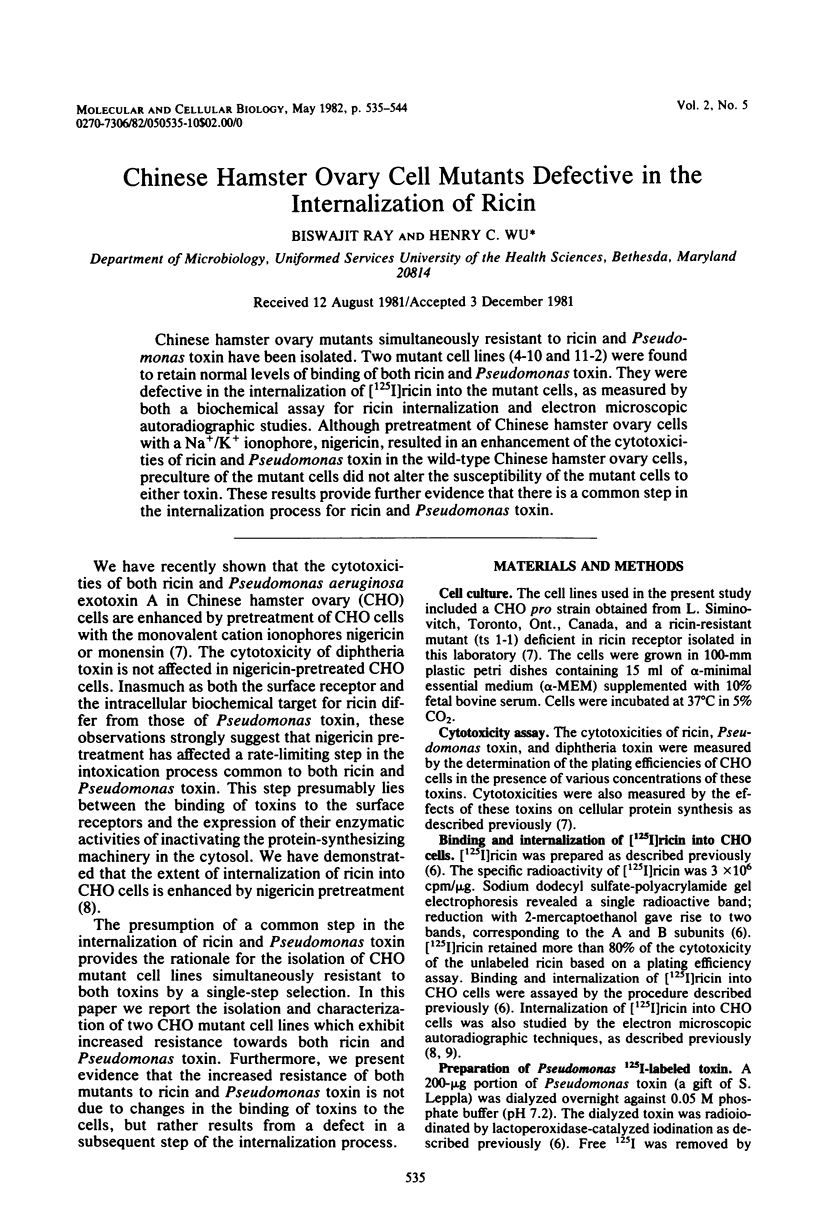
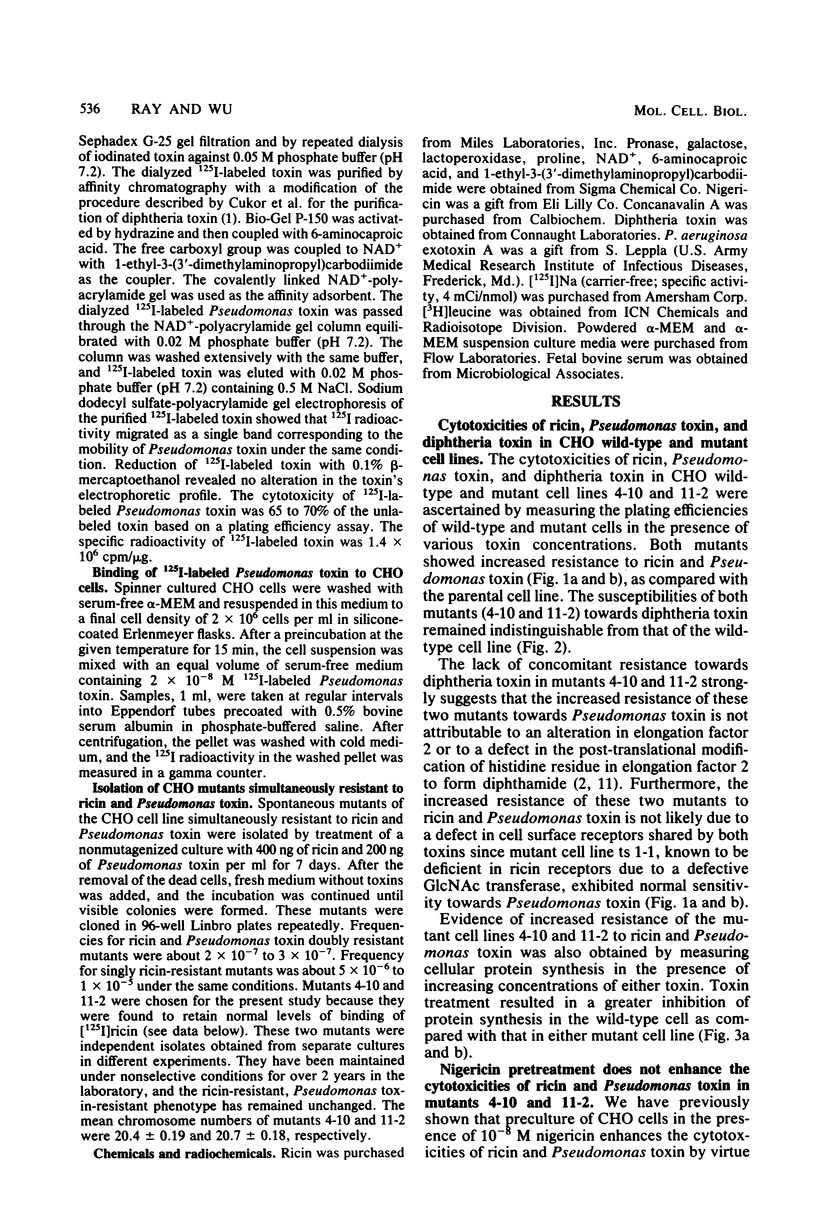
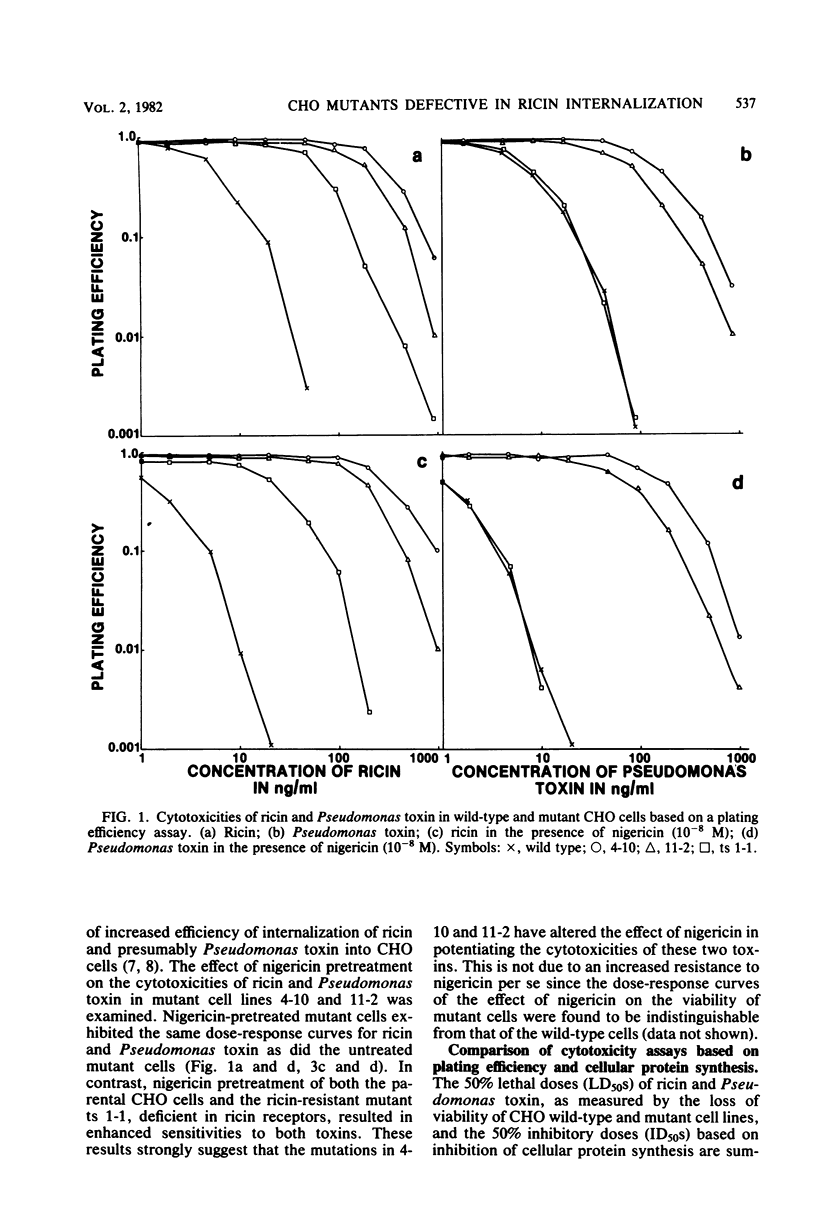
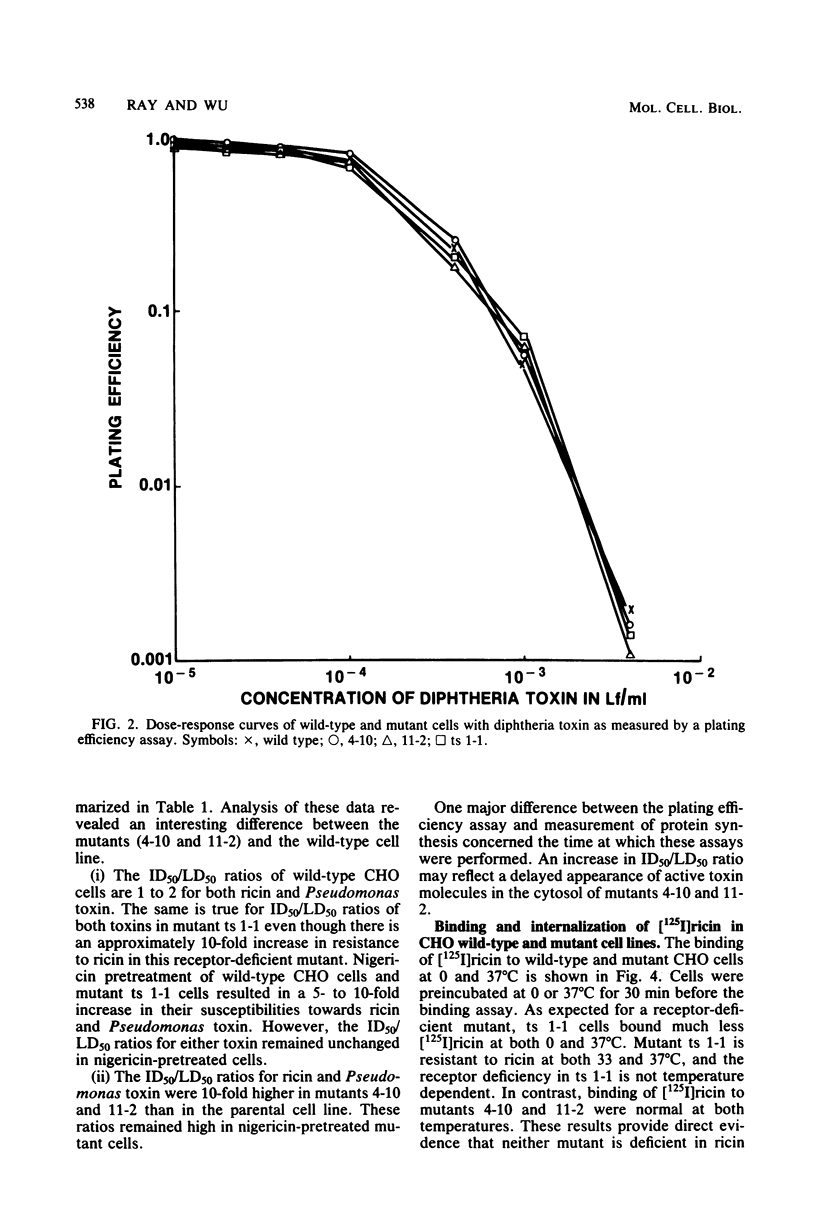
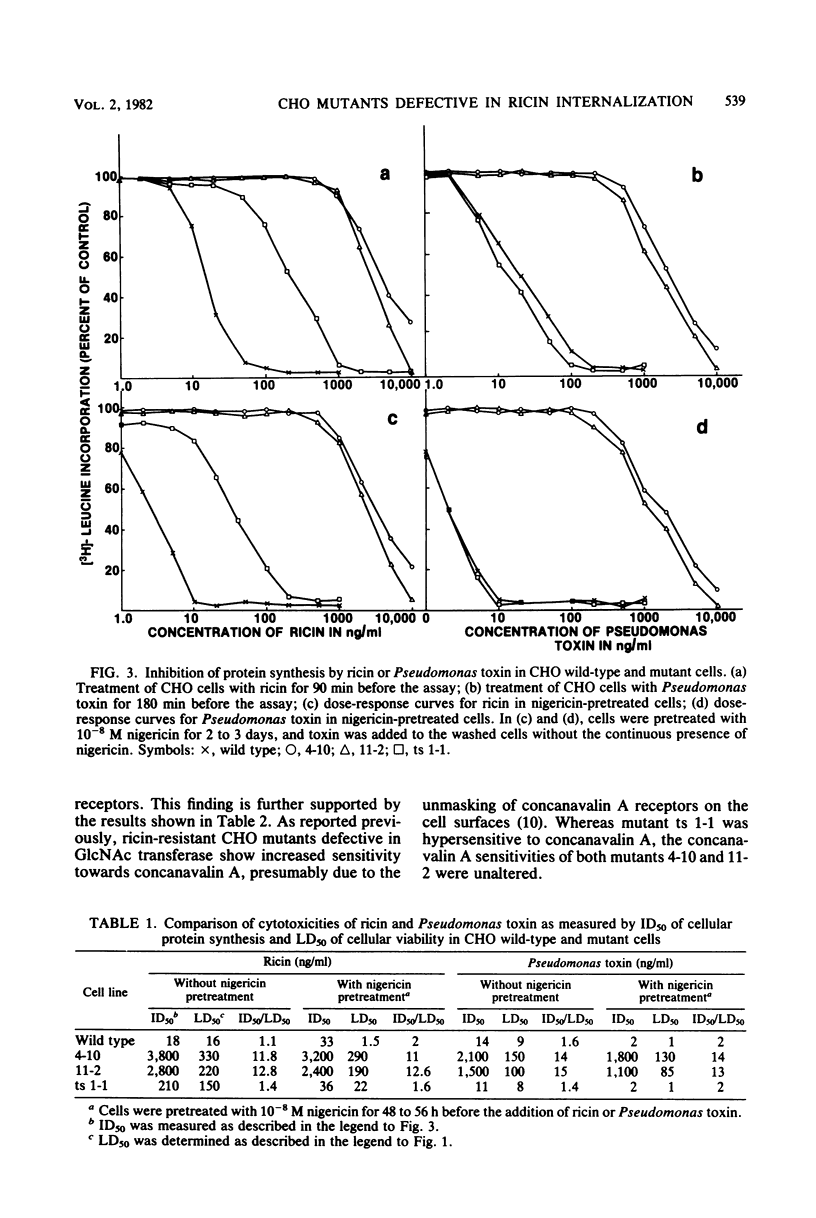
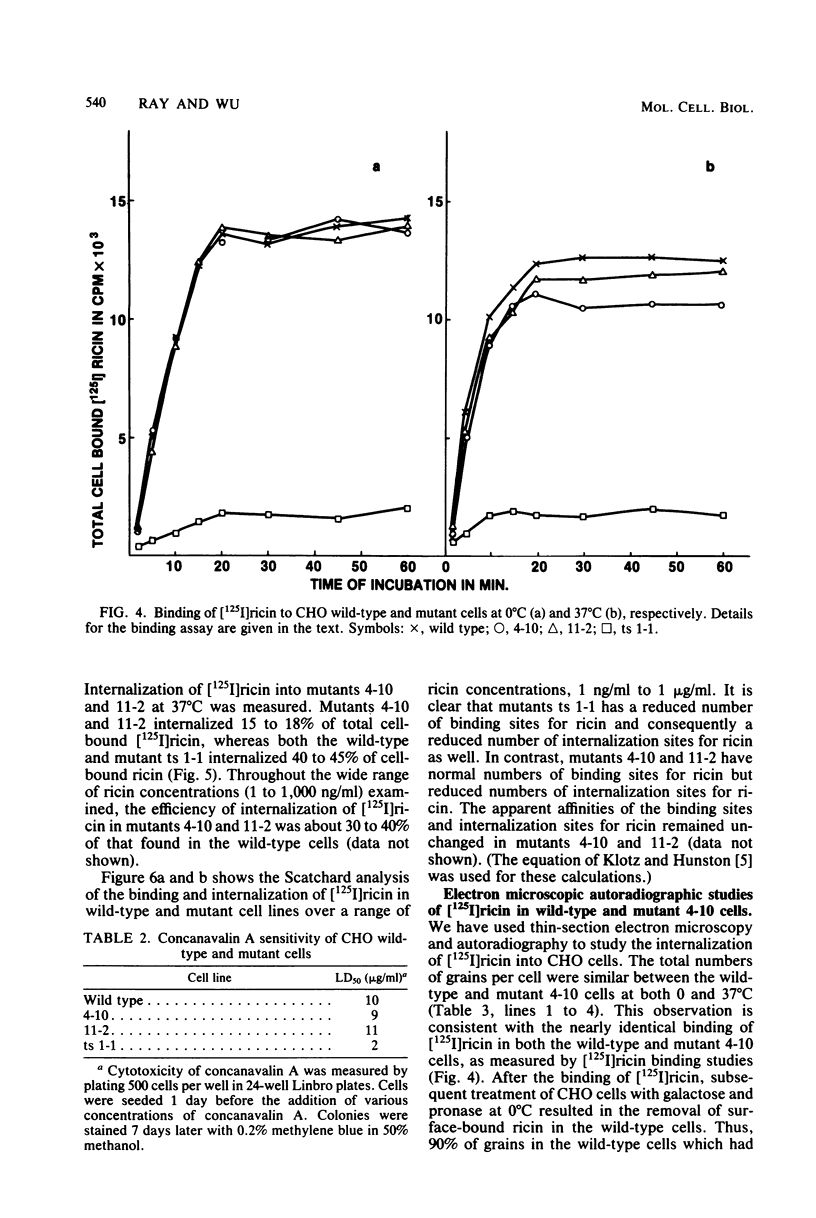
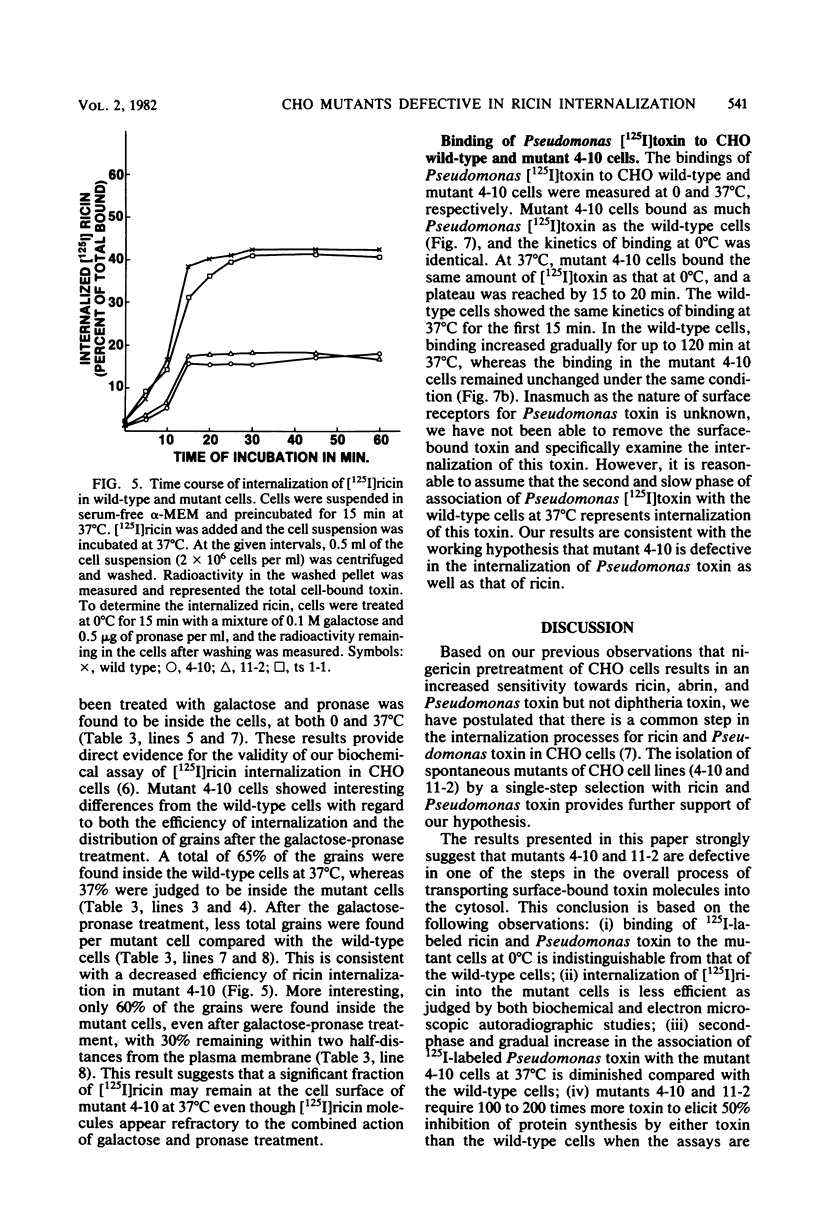
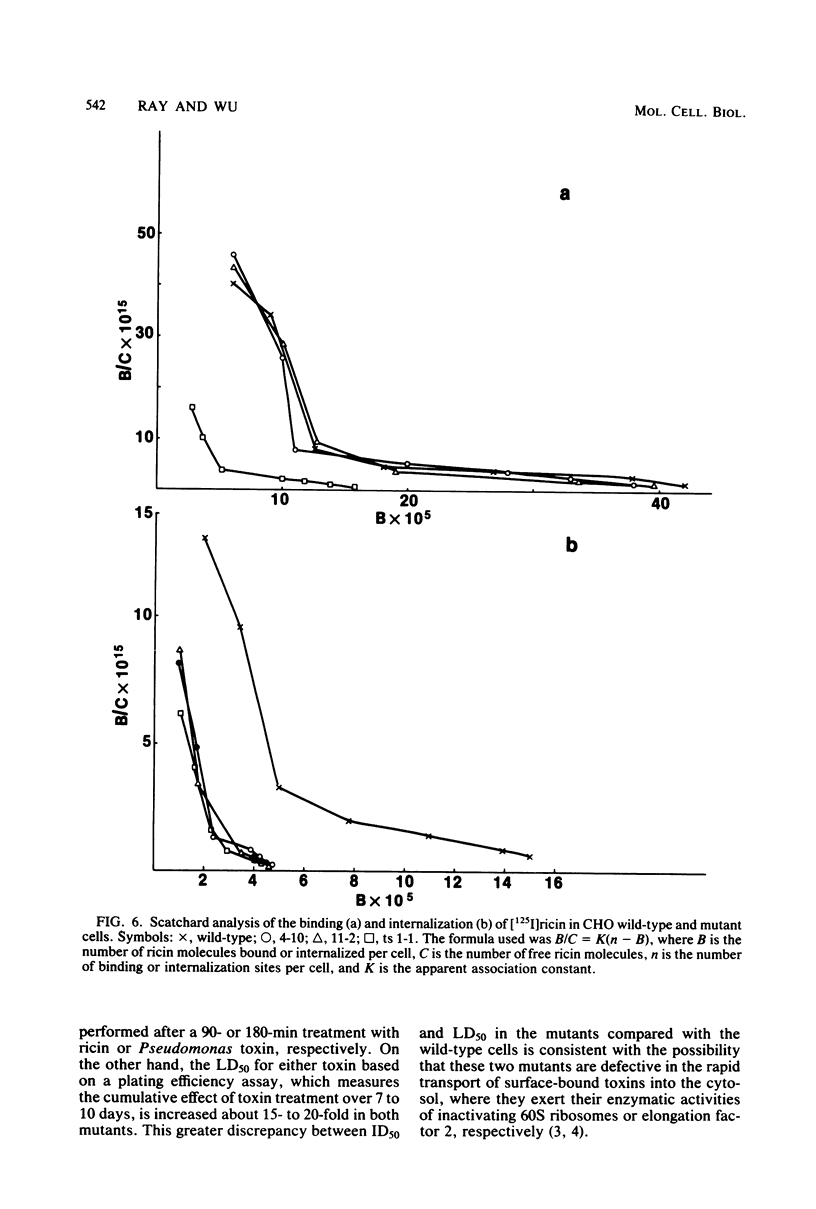
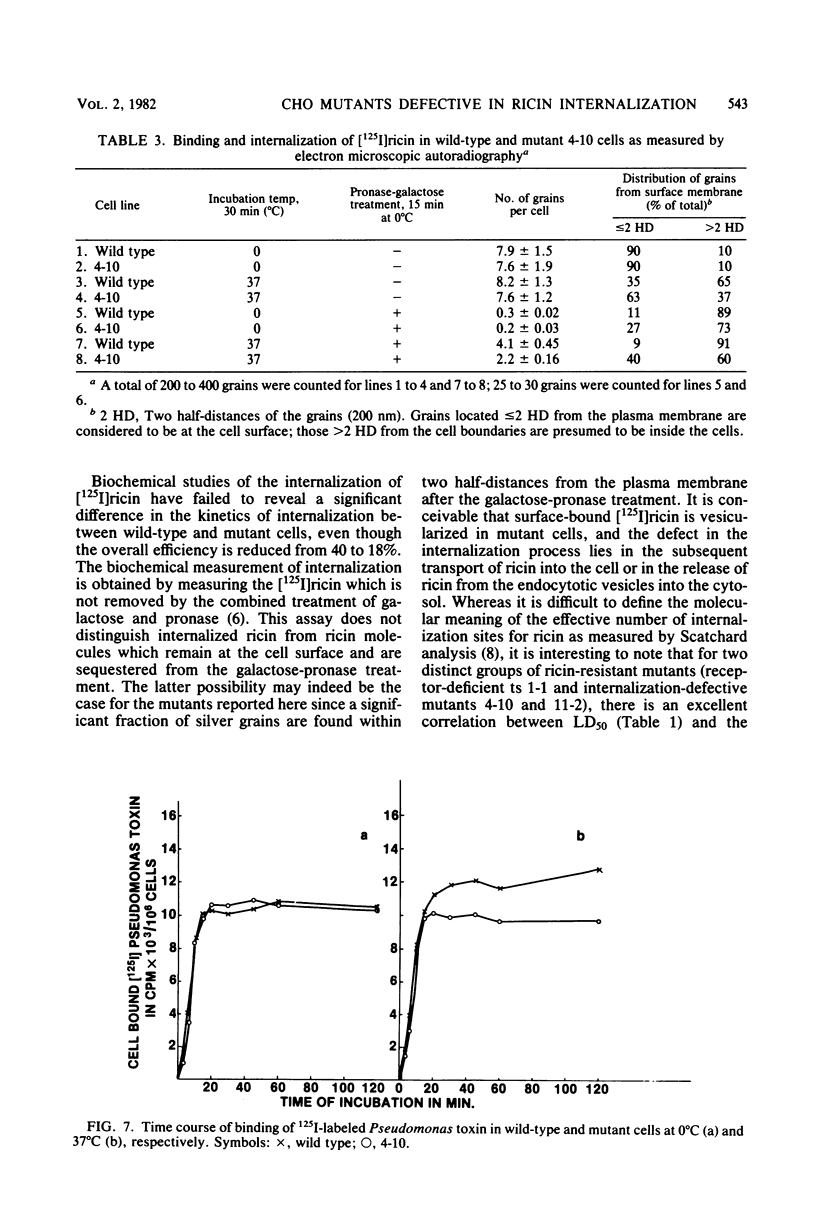
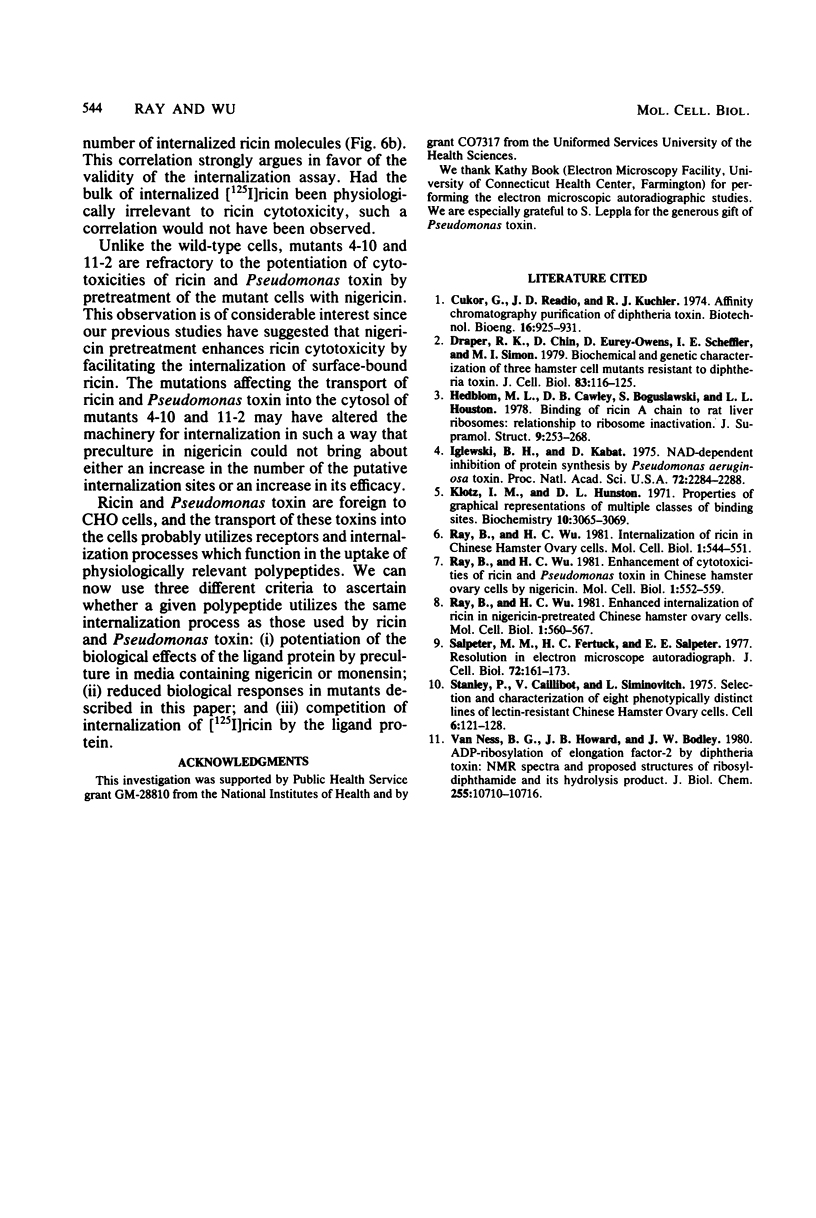
Selected References
These references are in PubMed. This may not be the complete list of references from this article.
- Cukor G., Readio J. D., Kuchler R. J. Affinity chromatography purification of diphtheria toxin. Biotechnol Bioeng. 1974 Jul;16(7):925–931. doi: 10.1002/bit.260160706. [DOI] [PubMed] [Google Scholar]
- Draper R. K., Chin D., Eurey-Owens D., Scheffler I. E., Simon M. I. Biochemical and genetic characterization of three hamster cell mutants resistant to diphtheria toxin. J Cell Biol. 1979 Oct;83(1):116–125. doi: 10.1083/jcb.83.1.116. [DOI] [PMC free article] [PubMed] [Google Scholar]
- Hedblom M. L., Cawley D. B., Boguslawski S., Houston L. L. Binding of ricin A chain to rat liver ribosomes: relationship to ribosome inactivation. J Supramol Struct. 1978;9(2):253–268. doi: 10.1002/jss.400090210. [DOI] [PubMed] [Google Scholar]
- Iglewski B. H., Kabat D. NAD-dependent inhibition of protein synthesis by Pseudomonas aeruginosa toxin,. Proc Natl Acad Sci U S A. 1975 Jun;72(6):2284–2288. doi: 10.1073/pnas.72.6.2284. [DOI] [PMC free article] [PubMed] [Google Scholar]
- Klotz I. M., Hunston D. L. Properties of graphical representations of multiple classes of binding sites. Biochemistry. 1971 Aug 3;10(16):3065–3069. doi: 10.1021/bi00792a013. [DOI] [PubMed] [Google Scholar]
- Ray B., Wu H. C. Enhanced internalization of ricin in nigericin-pretreated Chinese hamster ovary cells. Mol Cell Biol. 1981 Jun;1(6):560–567. doi: 10.1128/mcb.1.6.560. [DOI] [PMC free article] [PubMed] [Google Scholar]
- Ray B., Wu H. C. Enhancement of cytotoxicities of ricin and Pseudomonas toxin in Chinese hamster ovary cells by nigericin. Mol Cell Biol. 1981 Jun;1(6):552–559. doi: 10.1128/mcb.1.6.552. [DOI] [PMC free article] [PubMed] [Google Scholar]
- Ray B., Wu H. C. Internalization of ricin in Chinese hamster ovary cells. Mol Cell Biol. 1981 Jun;1(6):544–551. doi: 10.1128/mcb.1.6.544. [DOI] [PMC free article] [PubMed] [Google Scholar]
- Salpeter M. M., Fertuck H. C., Salpeter E. E. Resolution in electron microscope autoradiography. III. Iodine-125, the effect of heavy metal staining, and a reassessment of critical parameters. J Cell Biol. 1977 Jan;72(1):161–173. doi: 10.1083/jcb.72.1.161. [DOI] [PMC free article] [PubMed] [Google Scholar]
- Stanley P., Caillibot V., Siminovitch L. Selection and characterization of eight phenotypically distinct lines of lectin-resistant Chinese hamster ovary cell. Cell. 1975 Oct;6(2):121–128. doi: 10.1016/0092-8674(75)90002-1. [DOI] [PubMed] [Google Scholar]
- Van Ness B. G., Howard J. B., Bodley J. W. ADP-ribosylation of elongation factor 2 by diphtheria toxin. NMR spectra and proposed structures of ribosyl-diphthamide and its hydrolysis products. J Biol Chem. 1980 Nov 25;255(22):10710–10716. [PubMed] [Google Scholar]


